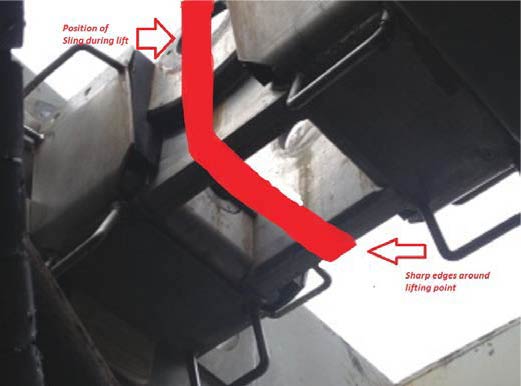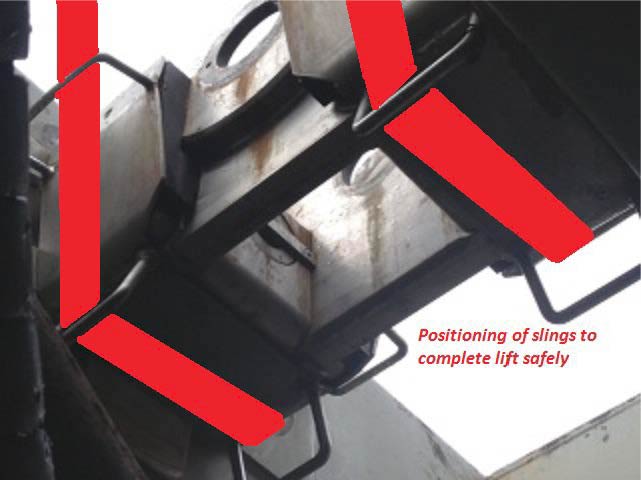High potential near-miss – Lifting equipment failure
A member has reported an incident in which there was a potentially catastrophic failure of a lifting sling. The incident occurred during repair and maintenance operations for a trenching ROV, when the trencher was being lifted onto axle stands to assist with on-going maintenance. The crew planned the lift using a single sling, as standard lifting strops were missing. The single sling was placed around the box section and it was identified that the lift point had a sharp edge which could have damaged the lifting sling. It was decided to pad the sharp edge with wadding to prevent damage to the sling. The crane started to take the weight of the trencher, and when it reached approximately 18T of tension, the sling failed. Upon inspection, it was found that the sharp edge identified had cut through the padding and sliced the sling causing it to part under load. No damage occurred as the trencher was never lifted off the ground.


Our member identified the following immediate causes:
- Inadequate planning – other lift points were available to complete the lift without the sharp edge affecting the lift;
- No management of change or ‘stop the job’ completed – the ‘stop the job’ process should have been implemented as soon as the missing strops were identified;
- Planned method continued despite identification of sharp edge – crew assumed that padding the sharp edge would be sufficient to complete the lift safely;
- No specific planned method was identified for completion of the lifts – planning was completed at site as requirements developed.
Our member identified the following root causes: . Inadequate equipment available -There was insufficient lifting equipment to complete the assigned tasks, leaving the crew to borrow equipment from elsewhere; the job should have been stopped in this context;
- Poor pre-work planning
- There was no lift plan developed before arrival at site;
- Correct lift points were not identified;
- Lift plan was developed at site developed with available rigging in mind, rather than correct lift points in mind.
- Lack of situational awareness
- All aspects of health and safety planning were completed, as required with regards to lift plans, job safety analysis and tool-box talk; however, an assumption was made regarding the application of padding around the sharp edge.
The following lessons were learnt:
- Ensure sufficient and appropriate lifting equipment is always available;
- Reiterate importance of ‘stop the job’ and management of change processes;
- Ensure lift planning is conducted with reference to correct and safe lifting, rather than ‘making do’ with what is available on site;
Members may wish to refer to Guidelines for lifting operations for further information.
Safety Event
Published: 25 June 2013
Download: IMCA SF 10/13
IMCA Safety Flashes
Submit a Report
IMCA Safety Flashes summarise key safety matters and incidents, allowing lessons to be more easily learnt for the benefit of all. The effectiveness of the IMCA Safety Flash system depends on Members sharing information and so avoiding repeat incidents. Please consider adding safetyreports@imca-int.com to your internal distribution list for safety alerts or manually submitting information on incidents you consider may be relevant. All information is anonymised or sanitised, as appropriate.
IMCA’s store terms and conditions (https://www.imca-int.com/legal-notices/terms/) apply to all downloads from IMCA’s website, including this document.
IMCA makes every effort to ensure the accuracy and reliability of the data contained in the documents it publishes, but IMCA shall not be liable for any guidance and/or recommendation and/or statement herein contained. The information contained in this document does not fulfil or replace any individual’s or Member's legal, regulatory or other duties or obligations in respect of their operations. Individuals and Members remain solely responsible for the safe, lawful and proper conduct of their operations.
